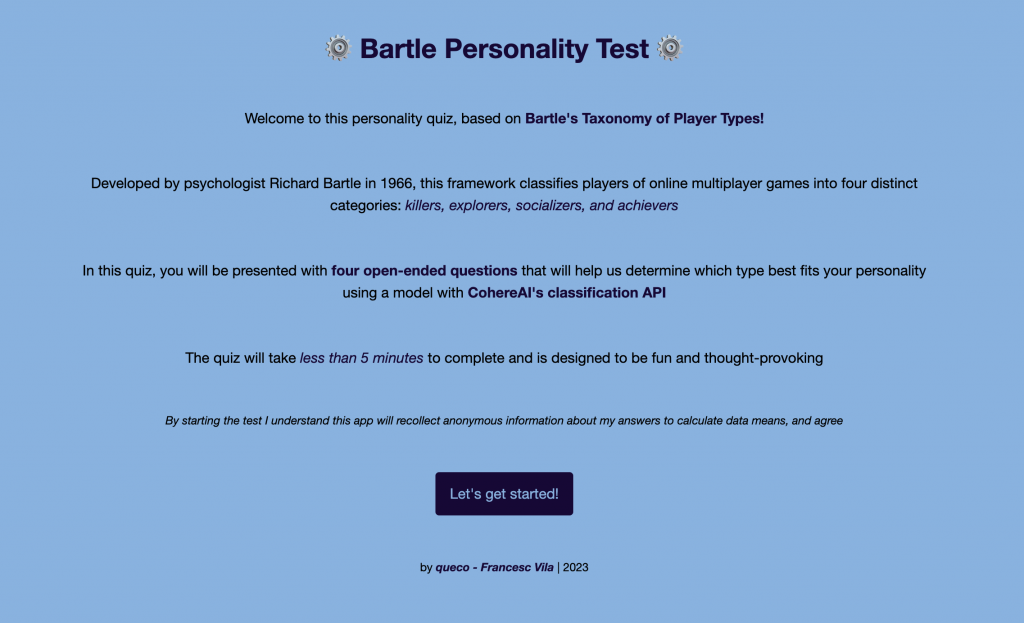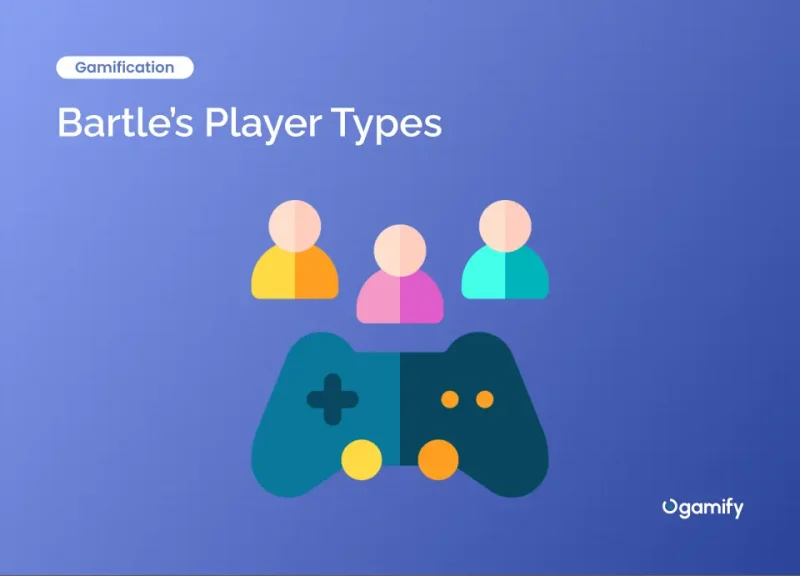In the world of gaming, understanding player motivations is essential for designing engaging and immersive experiences. One popular approach to classifying players according to their preferences has been Bartle’s Player Types, developed by Richard Bartle in 1996. His theory suggests four main categories into which gamers can be placed, based on their desired actions within a game.
Within these different player types, various gaming experiences can be tailored to cater to individual preferences. This allows game designers to create experiences that meet the diverse needs of the audience.
4 Different Types of Gamers
According to Bartle’s taxonomy, there are four distinct types of gamers: Achievers, Explorers, Socializers, and Killers. These categories help classify gamers based on their behavioral patterns and motivations for playing a specific game genre. This section will provide a brief overview of each type of gamer.

Achievers
Achievers are gamers who thrive on the challenges and levels that a game offers. They aim to win, achieve goals, and accumulate rewards, such as badges or high scores. Their primary motivation is to excel and demonstrate mastery within a game, and they may invest significant time and effort into this pursuit. They often prefer games that reward skillful play and provide opportunities for growth and improvement.

Explorers
Explorers are gamers who enjoy the process of discovering and probing the various aspects of a game’s world. These players may be enthralled by vast and immersive game environments, secrets to uncover, or intricate systems to understand. They often lean towards open-world or sandbox game genres because these types of games allow them to investigate and reveal new facets of the gaming experience in their own way. Among the Bartle’s player types, explorers prioritize the journey and sense of wonder associated with playing. This type of player appreciates intricately designed game elements, branching storylines, and intricate puzzles

Socializers
Socializers are gamers who derive pleasure from engaging with others in a game setting. They appreciate the camaraderie and communication that multiplayer and online games facilitate. For socializers, the priority lies in building relationships, teamwork, and sharing experiences with fellow players. Socializers often seek out games with strong community features, such as guilds, clans, or chat systems. Consequently, this type of gamer gravitates towards games with rich social environments, such as MMOs or cooperative multiplayer games, where they can interact and foster connections with others.

Killers
Killers are gamers who seek competition and domination in their gaming experiences. They enjoy asserting their mastery and skill against other players, often through player-versus-player (PvP) interactions. In some cases, this may involve strategic play and coordination to overpower opponents, while in others, it may center on outperforming adversaries in a test of reflexes and abilities. Regardless of the specific game genre, although they often thrive in competitive multiplayer games like shooters or real-time strategy titles, killers find satisfaction in the thrill of confrontation and the ensuing sense of accomplishment when they emerge victorious
By understanding these four types of gamers – Achievers, Explorers, Socializers, and Killers – we can gain a clearer grasp of the various gaming personalities and motivations represented within the diverse world of video games. Bartle’s taxonomy plays a critical role in gamification, as it can inform designers about which elements will appeal to different players and contribute to an engaging and well-rounded gaming experience.
Bartle Test
The Bartle Test is a gamer personality assessment tool, providing insight into individual player types based on their preferences and motivations while playing games.
These 4 categories help determine the aspects of gaming that individuals find most enjoyable, allowing developers and researchers to cater to various gaming styles more effectively.

And what type of player are you? Players can check it with a bartle test.This test can show what your type of player is. Additionally, it’s crucial to keep in mind that players may display features from multiple categories, with the majority of people having a dominant trait that determines their overall choice.

Players can also take the test on another website that has Bartle’s personality test and compare the results.
By employing the Bartle Test to assess gamer personalities, game developers and researchers can gain vital insights into the diverse range of player types and create enriching experiences tailored to the unique preferences of each individual. Such an understanding helps to ensure that games remain engaging and enjoyable for all players involved, regardless of their specific player type.
Conclusion
Researchers and game developers have found great value in understanding Bartle’s Player Types to create an engaging and immersive experience for gamers. The four primary player types – Achievers, Explorers, Socializers, and Killers – offer insight into the motivations and preferences of gamers within a virtual environment.
In this gaming landscape, it’s essential for developers to strike a balance that caters to each player type. By doing so, they can create games with diverse challenges and opportunities for interaction, appealing to a broad range of players. Achievers appreciate scoring, leveling up, and accomplishing in-game goals. Explorers find satisfaction in discovering new areas, solving puzzles, and uncovering hidden secrets. Socializers prioritize in-game relationships, collaborating with others, and forming communities. Lastly, Killers thrive on dominance, competition, and directly impacting the experiences of other players.
Moreover, it’s important to remember that players may exhibit traits from more than one category, with most individuals having a dominant trait determining their overall preference. This complexity reinforces the need for developers to take a multi-faceted approach to game design in order to maintain engagement across various player types.
As the gaming industry continues to evolve, the understanding and application of Bartle’s Player Types can help developers create more sophisticated, diverse, and engaging experiences for a global audience. By carefully considering the motivations and preferences of each type, developers can further refine their craft and successfully cater to an ever-growing gaming community.
FAQ
What are Bartle’s four player types?
Bartle’s four player types are a classification of gamers according to their motivations and preferences in games. The four types are Socializers, Explorers, Achievers, and Killers. Socializers enjoy interacting with other players, Explorers prefer discovering new locations and in-game experiences, Achievers aim for success by achieving in-game goals, and Killers thrive on competition and dominating other players.
How do Bartle’s player types apply to game design?
Understanding Bartle’s player types helps game designers create games that appeal to different players’ motivations. By incorporating various elements that cater to each of the four player types, designers can create more engaging and satisfying experiences for a wider range of players.
What is the purpose of the Bartle Test for gamer psychology?
The Bartle Test is a tool used to better understand a gamer’s preferences and motivations. It is designed to help players and game designers identify a player’s dominant type and tailor game experiences accordingly. By knowing what motivates a player, designers can create more engaging and compelling gaming experiences.
What is the relationship between Bartle’s player types and types of players in video games?
Bartle’s player types provide a framework for understanding the motivations and preferences of different types of players in video games. By categorizing players based on their dominant player type, game designers can better understand and predict how different players will engage with and react to various game mechanics and features.
How can the Bartle Test help in designing better games?
The Bartle Test gives game designers insights into the preferences and motivations of different types of players. By understanding these preferences, designers can create games that appeal to a broader audience. The test helps designers ensure that various game elements cater to the diverse motivations of players, resulting in more engaging and compelling gaming experiences.
Can someone identify their player type using the Bartle Test?
Yes, the Bartle Test is designed to help players identify their dominant player type by answering a series of questions. Based on their responses, the test will classify them into one of the four Bartle player types. This information can be helpful for players when choosing games that best suit their preferences and motivations, as well as for game designers seeking to create experiences that cater to different player types.

